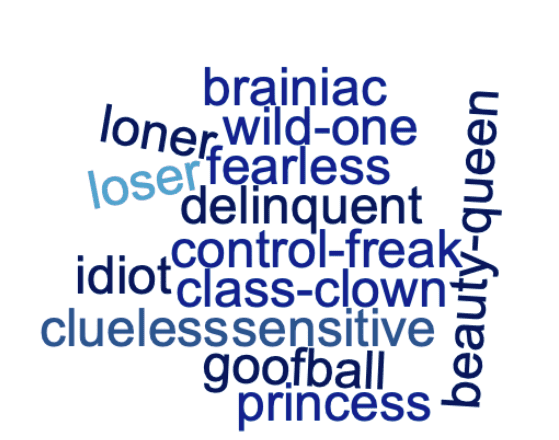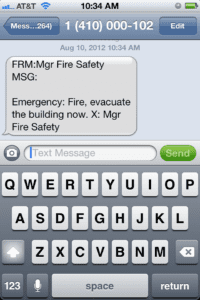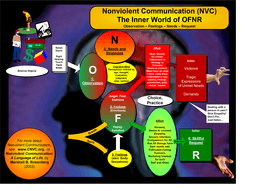The end of summer is a difficult time for many teens, especially older teens who are entering their final years of high school and anticipating the challenges that will come with that, and first year college students who may be moving away from home for the first time. So how can kids think about anxiety in a way that will help them continue to move forward in the face of fear and often overwhelming feelings? My own personal experience with anxiety might help shed some light on this all-too-common issue.
The problem with anxiety is that it is insistent. It is conniving and coy and always trying to convince me that I have to do something – or, NOT do something. Everything is fear-based with anxiety and, in my case, as soon as I started listening, it was incessantly in my ear, my brain, buzzing. But over a period of years I learned that the best thing I could do when she showed up was nothing. I promised myself that I wouldn’t ever make big decisions out of fear, and it took many repetitions of this mantra and even written reminders on my laptop, my bathroom mirror, my desk to help me hear it in my head over the sound of Anxiety’s yapping.
My first instinct was to fight Anxiety, and it worked for a while, but it was so much work. I was exhausted and Anxiety just kept coming back. Everything changed when I learned that instead of combating it, I could stop, breathe, acknowledge its presence. I could listen to the frantic admonitions, the nay-saying, the fear-mongering, and let them pass right through me. I started to pretend that they were the ramblings of some sad soul on the subway. I nodded with sympathy, heard Anxiety out, and released it all. I don’t have to believe any of it. I get to understand where Anxiety is coming from and honor it and also not follow its advice. Anxiety will tell you that it wants what is best for you, that it will keep you safe, but that path keeps you small and afraid. It keeps you in the dark – isolated and lonely. True, I might be safe, but that’s not how I want to live, and I’m pretty sure, if your kids are honest with themselves, that’s not the life they want either.
THINGS TO KNOW ABOUT ANXIETY
It’s important to remember that Anxiety isn’t me. Anxiety is afraid and it always will be – it is literally the only reason Anxiety exists, but it is not why I’m here. I have other reasons for being, and while Anxiety is loud and compelling and jacks up my heart rate and makes my palms sweaty and my head spin, it is possible to gradually separate myself from Anxiety. I can hear its words as though I’m underwater – muffled and distorted – I can let them pass through me and not stick.
It is also important to remember that Anxiety hates being ignored. It will come back again and again. I know this. But I also know that everything I’ve ever done that I’m proud of, that was worth it, that gave me joy, was in spite of it. Going to college. Getting married. Having a baby. Those were all things that paralyzed me, that made Anxiety stand up and say, “What do you think you’re doing? You don’t know how to do this! This is terrifying!” And I believed that some of the time, but I did those things anyway, and I don’t regret it. It is possible to move forward, step by step, with Anxiety right next to you, yammering in your ear that you couldn’t do this, sweating and heart pounding.
Maybe most important, Anxiety is quiet when you’re busy – when you’re doing your thing. Because you’re calling it on its BS. You’re proving it wrong. You’re showing it that you CAN do this, that you WON’T mess it up, that you are capable of going out there and living your fullest life. That’s also why it’s loudest before bed and right when you wake up – because you’re chilling and not out doing, but if you can work on silencing it (or acknowledging, listening, and dismissing) at those times, it gets much easier.
KEY THINGS TO REMEMBER
*Know who you are. Know what you want. Know what you’re willing to do to get there. Anxiety doesn’t like clarity. The more clear you are, the less Anxiety will pipe up.
*All you have to do is the next right thing. When Anxiety is chatting away in your ear, it’s tempting to believe that you have to have it all figured out, that you have to have a plan. But, to be honest, there is never a point in your life where you have to have it all figured out. When you’re dealing with anxiety, the best thing to do is take the next step forward. And the next. And the next.
*Bonus points for noticing the things that feel right, that make you smile. Gratitude is a powerful antidote to Anxiety. If you get immersed in school and you start to enjoy yourself, do yourself a favor and take a moment to chalk one up for you and rub it in Anxiety’s face. You’ve got this.
*More bonus points for patting yourself on the back every time you go to class, talk to someone, join an exercise group, get out of bed. Those are monumental acts when Anxiety is riding shotgun.







